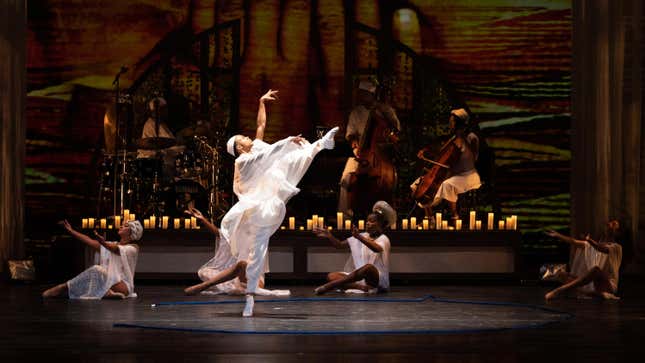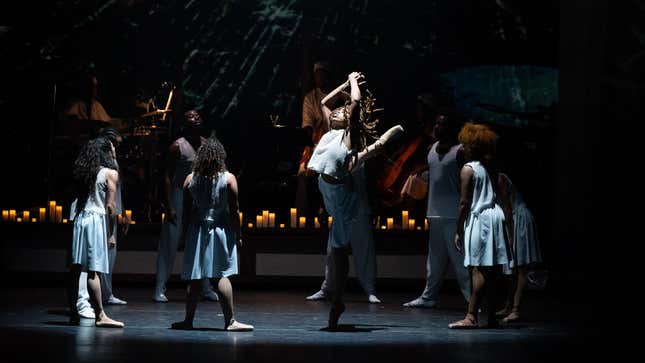Black Ballet Companies Converge in Historic, ‘Electric’ Program at the Kennedy Center
"For all of us to be on one stage coming together for not just one show, but seven shows?" dancer Karla D. Tyson told me. "It’s unheard of.”
In DepthIn Depth

The show starts with 624 names.
They roll down the screen from Memoirs of Blacks in Ballet like credits, all the Black and brown people who’ve contributed to the field of ballet highlighted in the spirit of Sankofa—an African tradition that acknowledges the importance of recalling the past in order to ensure the future. Historically, their contributions have been erased, downplayed, or muted, but tonight, their contributions are front and center. Despite allies and historically white institutions showing up for Black communities in the wake of the Black Lives Matter movement, what is about to take place on the stage of the John F. Kennedy Center for the Performing Arts in Washington, D.C., is a convergence of individuals who have been doing the work for decades. And while the evening is a collaboration of three predominantly Black ballet companies, the influence and echoes of every one of those 624 people can be felt on that stage.
This week, the Kennedy Center, one of the leading performing arts organizations in the country, united the Dance Theatre of Harlem, Ballethnic Dance Company, and Collage Dance Collective together on a program for the first time. The series, titled “Reframing the Narrative,” hosted seven performances centering Black excellence in dance, including several throughout Juneteenth weekend. Both Ballethnic and Collage Dance were formed by disciples of Dance Theatre of Harlem’s visionary artistic director Arthur Mitchell, who created one of the foundational Black ballet companies in America in the height of segregation.
The program, a nearly two-year-long brain child of curators Theresa Ruth Howard and Denise Saunders Thompson, also features the world premiere of a commission by choreographer Donald Byrd, which brings together Black ballet dancers currently performing in historically white ballet companies all over the world. Curated by Howard, the piece features Portia Adams (Les Ballets de Monte-Carlo), Precious Adams (English National Ballet), Jonathan Philbert (Atlanta Ballet), Corey Bourbonniere (Pittsburgh Ballet Theatre), and Miranda Silveira (The Joffrey Ballet), among others, as they’re given the opportunity to dance in a space where their Blackness is centered, rather than exploited. In a wave of performative diversity efforts, the Kennedy program appears to be proof that some organizations are actually listening to the needs of modern audiences.
-

-

-

-

-

-

-

-

-

-

-

-

-

-

-

-

-

-

-

-

-

-

-

-

-

-

-

-

-

-

-

-

-

-

-

-

-

-

-

-









































